Disinfection of water in the well: one-time and systematic
If you have doubts about the purity of the water source, or an examination of the water from the well showed that the level of contamination exceeds the permissible norms, it is urgent to think about disinfection. In this case, the cleaning process should be carried out regularly, and in some cases, disinfection must be performed at least once a week.
In our article we will tell how to get rid of pathogenic microbes, how to soften water from a well, and also what needs to be done to maintain normal health of the source.
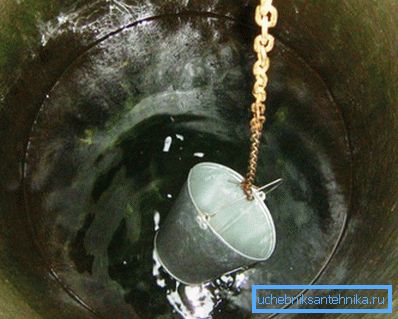
Well condition assessment
Fluid quality parameters
If you plan to use an already equipped source, then first of all we need to find out whether it is possible to drink water from a well. The easiest way is to interview our neighbors: if underground waters are used in adjacent areas, and no one has been poisoned yet, it means .
Now we need to conduct a preliminary analysis.
If you do not know where to check the quality of water from the well, or do not want to spend money, then you can do with "folk remedies":
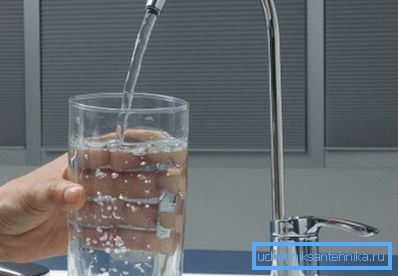
- The easiest way - control with tea. We select water from the well without filtering and settling and brew strong black tea. The control portion is prepared on bottled water with low salinity or on imported filtered water. If the difference is very noticeable - cleaning will be required.
- Also checking the quality of water from the well provides for settling in a dark place.. Pour water into a closed container and place, for example, in the pantry. A poor liquid after 48 hours will precipitate or an oily film on the surface of the water.
- Rapid mineralization test carried out using a mirror. We put some drops on glass and we wait for drying. The presence of white, and even worse - dirty-brown divorce is a very disturbing signal.
- The study of water from the well with potassium permanganate will help determine the amount of organic matter. If the pink solution of potassium permanganate quickly turns yellow, then you should not use the liquid without prior cleaning.
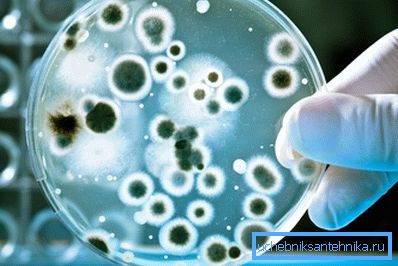
And yet, if you do not know how to check the quality of water in the well - it is better to contact professional services, for example, in SES. The cost of such control, of course, will be quite high, but you get the most relevant picture.
Work plan
So, preliminary or laboratory control is carried out, and water is recognized as principally suitable for drinking after disinfection. What do we need to do?
The work plan for water treatment includes the following steps:
- Perform repair work to prevent precipitation, soil particles, foreign objects, etc. from entering the aquifer. At the same time, we waterproof the casing inside and outside, erect the blind area, ensure the tightness of the cover, etc.
Note! The lid on the neck should be stowed even if the roof is equipped above the well.
- Cleaning the walls of the mine from mineral deposits, algae, colonies of bacteria and fungi.
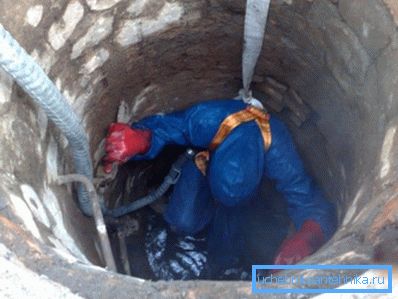
- Removal of silt from the bottom (drainage and / or mechanical method).
- Excavation, cleaning and laying of the bottom gravel filter.
- Disinfection of walls and equipment used.
- The complex of measures for the direct disinfection of water.
In the presence of a certain skill, this plan may well be realized by own hands. This will allow us to significantly reduce costs, because when you contact a company specializing in cleaning, you will have to pay a considerable amount.
Tip! If you are looking for where to check the water from the well or to whom to ask for disinfection - in any case, do not stop at the lowest price offer. If there are no problems with disinfection, the accuracy of the analysis will clearly not be up to par. Comprehensive research on professional equipment can cost about 5-8 thousand rubles.
Disinfection
Cleaning and disinfection
As we see from the plan, the actual decontamination is divided into two stages: the treatment of the well and the maintenance of sanitary conditions. Below we consider all the techniques used for this in detail.
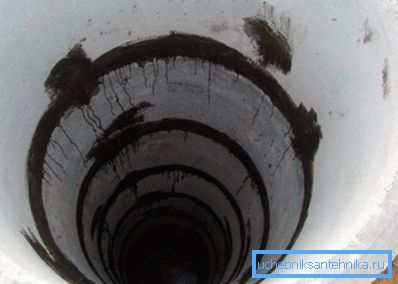
Instructions for processing the well provides for such actions:
- First, we need to pump out or scoop out water, and preferably to the very bottom. This can be done with the help of the simplest pump.
Tip! To prevent the pump, which is not intended for drainage, from becoming clogged with silt, we attach a stick about half a meter long at the bottom near the water intake port. Stick rests in the bottom and will not let the pump "grab" sand and silt.
- We dry the well shaft mechanically. To do this, we descend down and scrape away a hundred of walls of everything that is scraped off - salt deposits, bacterial plaque, colonies of algae, etc. After processing, we must remain clean concrete rings well.
- Next, we arm ourselves with a shovel and collect silt, sand and the upper layer of a gravel filter from the bottom. With the help of a bucket on a rope, we lift the collected material to the surface and lay it out on a flat platform, covered with a tarpaulin or non-woven material, for washing.
- After washing, add shungite or silicon to the gravel. These minerals will help to soften the water, which is also very important.
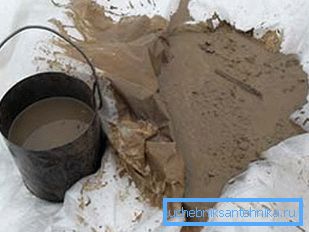
Tip! To facilitate the work, you can use a drainage pump. In this case, the sludge is pumped out without preliminary drainage of the well.
- We inspect the gap between the casing rings, all the cavities discovered are plastered with sealant.
Next, start the chlorination of water in the well:
- Dilute in cold water bleach (20 grams of lime per liter of water or 500 ml of "Whiteness" per bucket).
- The resulting composition is applied to the walls of the well with a brush or spray paint.

- In the course of work, we must use a respirator, and when it is necessary to descend to a great depth, then a gas mask.
- If the composition remains - pour it to the bottom. All the same, within a few hours the water will arrive and the reaction we need will pass.
- We close the well with polyethylene for at least two days.
- After this period, open the lid, ventilate the shaft and flush the walls with a hose.
- The collected water is pumped out twice and drained. It can be used only for technical purposes: it is not suitable for drinking or for watering.
After pumping, it is necessary to check the composition of the liquid: if it still gives off bleach, pumping must be repeated. It is also advisable to boil water for at least two weeks before drinking.
Maintain good health
If analyzes show that, despite our efforts, the level of contamination remains above acceptable levels, we will need to systematically prepare the water itself.
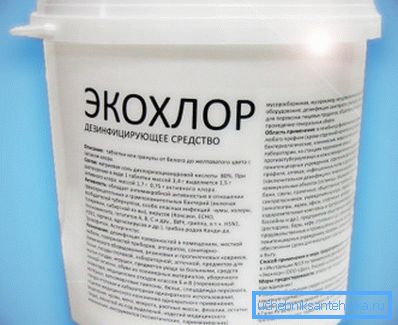
Tip! The measures described below are also relevant for epidemiological threats.
This is done in this way:
- If you are looking for a way to disinfect water in a well, then the easiest way is to use bleach. To do this, we calculate the approximate volume of the aquifer of our well in liters (this is easy to do if the level of the water mirror is known).
- Based on the resulting volume, add in water from 2 to 5 milligrams of active chlorine per liter of water. As a rule, there is enough liter of bleach solution (1%) for high-quality disinfection.
- After adding the reagent water must be thoroughly mixed, and only then to its selection. Good results are achieved with the use of an aerator: due to saturation of the liquid with oxygen, the activity of chlorine increases, and the amount of the applied solution can be reduced at least twice.
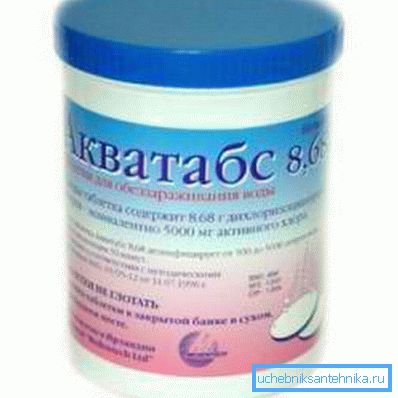
- Potassium permanganate or special disinfectant tablets can also be used instead of bleach. They are quite convenient to use (no need to suffer with the preparation of the solution of the desired concentration), but their price is very high. However, if you can afford it - buy safely!
Note! Similar compositions can be used to soften too hard water.
In any case, it is necessary to constantly monitor the quality of the water, and if necessary, carry out a full cleaning immediately.
Conclusion
Information on how to disinfect the water in the well, will be useful to any owner of a country house. If you carry out the procedures described above at least once every two to three years, then you definitely will not have problems with water quality, as well as with siltation and growth of colonies of algae. You will find even more useful tips by viewing the video in this article.